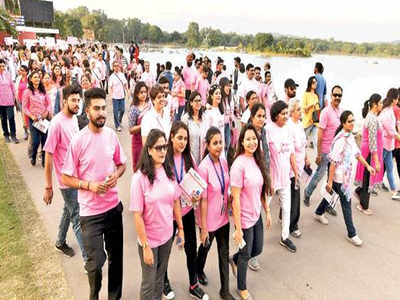Mumbai| HL
There are 933 girls born per 1,000 boys, in Mumbai. It significantly ahead of the national average of 918.The city’s child sex ratio reached an all time high in 2015. But several wards of the city bucked the progressive trend to register a worrying gap.
As per recently released BMC data, 11 of 24 wards registered a dip in the ratio, indicative of a strong bias towards the male child, compared with 2014. Cutting across socio-economic classes, the skewed ratio is visible right from the posh neighbourhoods of Colaba, Nariman Point and Fort to the slum pockets of Govandi, Mankhurd and Bandra (East). It includes even the prosperous belts of Borivli and Magathane.
Despite dwindling childbirths due to a demographic shift over the years, the sex ratio in the island city (943) is better than the western (932) and eastern suburbs (927).
Ward C (Bhuleshwar, Pydhonie, Marine Lines and Dhobi Talao) once again recorded the lowest ratio, at 837. It is the only ward where less than 900 girls were born for 1,000 boys.The BMC has cited significantly fewer deliveries in the area–1,242 in 2015 compared to 7,000-15,000 in other wards–as the primary reason. For the remaining 10 poor performing wards, there is hardly any reasonable explanation.
The sex ratio dip at Bandra, Khar and Santacruz (East) is particularly alarming. It plunged from 949 in 2014 to 903 last year. Areas like Deonar, Anushakti Nagar, Govandi and Mankhurd, too, showed a decrease from 935 in 2014 to 909 in 2015. “The decline is not justifiable in several pockets of the city and we will be looking into the reasons. Our previous trends indicate that sex selection is not that common among slum dwellers. For certain areas in south Mumbai like ward A, a population shift to the suburbs is mainly to blame,” said Dr Padmaja Keskar, executive health officer at BMC.
A 2011 study on ‘Sex ratio at birth in suburban slums of Mumbai’ shows the BMC’s observation is off the mark. The paper by Holy Family Hospital’s Ancilla Tragler, a paediatrician and community health consultant, had not only found a strong preference for male child in four suburban slums, but also that sex selective abortions were rampant. ” A history of abortion was reported among 28% of the 304 families that were interviewed.Around 79% were induced abortions, of which 52% were purely to prevent the birth of a girl child,” Tragler told TOI.She said it was shocking how poor families with limited means were ready to spend on abortion in private hospitals.The study also found that the preference for the male child was prevalent across communities and religious groups.
Health activists think poor implementation of the Pre-Conception and Pre-Natal Diagnostic Techniques (PCPNDT) Act is directly responsible for the imbalance in certain wards. “The task force that cracks down on illicit clinics and doctors in the city have not met for the last two years.There are no drives or surprise checks on sonography centres or clinics,” said Varsha Deshpande of the NGO Lek Ladki Abhiyan. She said there is a glaring lack of political will to tackle the issue of `missing girls’.
According to social experts, a few other reasons, be sides female foeticide, could be leading to the decline in sex ratio. “There are families where the fertility behaviour is aimed at having at least one male child. They follow the `stopping rule behaviour’, which means that the family stops planning once they have a child of their gender preference. While it may not affect the sex ratio at birth, it definitely makes a dent later,” said P Arokiasamy of the International Institute of Population Science (IIPS).
Keskar insisted that all was not gloomy about the city’s sex ratio, as certain areas have shown incredible change. Worli, Lower Parel, Prabhadevi and Mahalaxmi scored a near perfect ratio of 991 in 2015, a commendable increase from 968 in 2014. Even Dongri has shown a jump from 926 in 2014 to 974 last year.










